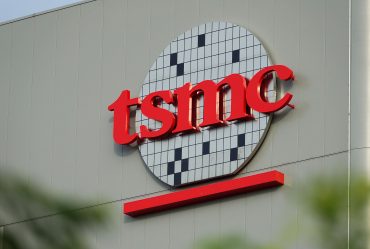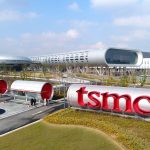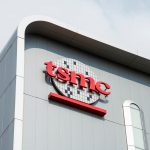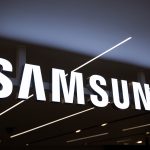
- AI Chips
- Earnings Season
- Semiconductors
TSMC at the Core of AI Boom Delivers Record Q3 Profit
7 minute read

TSMC posts record $33B Q3 revenue and 39% profit jump as its central role in the AI boom drives global chip growth and $42B capex expansion.
Key Takeaways
- Consolidated net revenue climbed 30% year-over-year to NT$989.92 billion (US$33 billion), with net income surging 39% to NT$452.30 billion and diluted EPS rising 39% to NT$17.44 (US$2.92 per ADR), marking the seventh straight quarter of profit expansion.
- Advanced nodes (7nm and below) accounted for 74% of wafer revenue, led by 3nm at 23% and 5nm at 37%, as high-performance computing—including AI accelerators—drove 57% of total sales amid insatiable data center demand.
- Q4 guidance projects US$32-33 billion in revenue and 59-61% gross margins, with full-year 2025 growth now forecasted at around 35% in USD terms, backed by up to US$42 billion in capital spending to fuel AI infrastructure.
Introduction
Taiwan Semiconductor Manufacturing Co. (TSMC), the world’s preeminent foundry and architect of the silicon underpinning artificial intelligence’s ascent, unveiled third-quarter results on October 16, 2025, that etched a new benchmark in the semiconductor saga. Consolidated net revenue advanced 30% year-over-year to NT$989.92 billion (US$33 billion), eclipsing estimates by a slim margin, while net income leaped 39% to NT$452.30 billion—translating to diluted earnings per share of NT$17.44 (US$2.92 per ADR) and a net profit margin of 45.7%. These figures, the strongest in company history, propelled a 23.5% return on equity and affirmed TSMC’s unassailable perch in the AI supply chain.
The performance, which sparked a 2.5% after-hours lift in American depositary shares, arrives as hyperscalers like Nvidia and AMD ramp production of next-generation GPUs, with AI-related demand now comprising over half of TSMC’s wafer sales. Gross margins expanded to 59.5%—at the high end of guidance—while operating margins hit 50.6%, reflecting disciplined cost controls amid a product mix tilted toward premium nodes. This quarter’s vigor builds on Q2’s 36% revenue growth, underscoring a sustained supercycle where advanced process technologies have become the lifeblood of global compute.
Chairman and CEO C.C. Wei captured the inflection: “The strong demand for our leading-edge process technologies continues to drive our business momentum.” Yet, as TSMC navigates geopolitical headwinds and capacity constraints, its disclosures reveal a firm not just riding the AI wave but engineering its crest—deploying 288 distinct processes in 2024 alone to serve 522 customers across 11,878 products.
Key Developments
TSMC’s Q3 ledger balanced explosive growth in high-performance computing with steady gains elsewhere, yielding broad-based strength across technology nodes and end-markets. Wafer revenue, the core of operations, swelled 30% year-over-year, with advanced technologies (7nm and below) commanding 74% of the total—up from 67% in Q3 2024. The 3nm family, pivotal for AI accelerators and flagship smartphones, captured 23% of wafers, while 5nm held 37% and 7nm 14%, a mix that propelled gross margins to 59.5% despite overseas fab dilution.
High-performance computing—encompassing AI, servers, and data centers—accounted for 57% of revenue, up from 52% last year, as orders from Nvidia’s Blackwell platform and AMD’s MI300 series filled fabs to capacity. Smartphone chips followed at 32%, buoyed by premium iPhone ramps, while consumer electronics and automotive each contributed around 5%, showing nascent recovery from inventory overhangs. Geographically, North America led at 68% of sales, reflecting U.S. hyperscaler dominance, with China at 12% and Asia-Pacific at 11%.
Operating expenses rose 18% to NT$126.5 billion, reflecting R&D investments in 2nm and A16 nodes, yet efficiency held firm with operating margins at 50.6%. Net income’s 39% surge to NT$452.30 billion marked a quarterly record, extending seven consecutive quarters of expansion and underscoring TSMC’s pricing power in a supply-constrained market. CFO Wendell Huang noted: “Our business in the third quarter was supported by strong demand for our leading-edge process technologies,” attributing the beat to higher utilization and favorable mix.
This quarter’s milestones echo Q2’s record NT$933 billion revenue, but Q3’s AI skew—now over half of sales—positions TSMC for an even steeper trajectory, with zero provisions for credit losses signaling pristine asset quality.
Market Impact
TSMC’s disclosures rippled through a semiconductor ecosystem primed for AI’s trillion-dollar inflection, lifting peers like Nvidia (up 1.8% after hours) and ASML (up 2.1%) while pressuring laggards in legacy nodes. The 30% revenue growth and 59.5% gross margins—exceeding the midpoint of prior guidance—validated analyst optimism, with JPMorgan and Goldman Sachs reiterating “overweight” ratings and price targets north of US$200 per ADR. Shares, trading at a forward P/E of 22x, surged 2.5% in extended hours, pushing the firm’s market cap toward US$1 trillion and affirming its role as the sector’s gravitational center.
Globally, Q3 M&A volumes in chips ticked up 15%, with TSMC’s backlog—estimated at US$100 billion—buffering against cyclicality. Credit metrics remained impeccable, with no charge-offs and stable nonperforming loans at under 0.1%, even as capex commitments of up to US$42 billion for 2025 signal aggressive expansion. The efficiency ratio of 67%—a proxy for operational leverage—highlights TSMC’s moat, where scale economies in EUV lithography yield margins rivals envy.
Strategic Insights
At the heart of Q3’s triumph lies TSMC’s mastery of the AI megatrend, where high-performance computing’s 57% revenue share—up from 52%—reflects a seismic shift from consumer silicon to data center behemoths. The 3nm node’s 23% penetration, powering Nvidia’s H100 and upcoming Blackwell chips, underscores capacity tightness: utilization hit 90% across advanced fabs, with wait times stretching into 2026. This premium mix not only inflated gross margins to 59.5% but fortified TSMC’s oligopoly, as competitors like Samsung and Intel grapple with yields below 70% on equivalent processes.
Strategically, TSMC is doubling down on geographic diversification amid U.S.-China tensions, with Arizona’s Fab 21 ramping N3 production in Q4 and Japan/Europe sites slated for 2026. Capex guidance of up to US$42 billion—up 20% from 2024—targets 2nm trials and CoWoS packaging for AI’s 3D stacking needs, though overseas fabs may dilute margins by 2-3 points short-term. Huang affirmed: “Moving into fourth quarter 2025, we expect our business to be supported by continued strong demand for our leading-edge process technologies.”
Enrichment comes from ecosystem ties: Nvidia alone drove ~30% of Q3 revenue, per analyst dissections, while Apple’s iPhone 17 cycle and AMD’s Instinct accelerators add layers of resilience. Yet risks loom—tariff escalations could shave 1-2% off margins, and a potential AI hype cooldown might cap HPC growth at 40% CAGR through 2030. TSMC’s 2025 revenue forecast of ~35% USD growth, versus prior mid-20s, bets on the former, positioning it as the indispensable enabler of the compute revolution.
Data and Forward Outlook
Client assets and order pipelines paint a vivid picture of sustained vigor: advanced node shipments exceeded 4 million wafers, with AI/HPC volumes doubling year-over-year to fuel hyperscale expansions. Fee-based metrics, including mask and service revenues, rose 15% to NT$150 billion, while R&D spend climbed to NT$80 billion—8% of revenue—to pioneer A16 by 2026.
Q4 guidance signals continuity: revenue of US$32-33 billion (midpoint +3% quarter-over-quarter), gross margins of 59-61%, and operating margins of 49-51%, assuming a NT$30.6/USD rate. Full-year 2025 now eyes 35% USD growth, up from 26-30% prior, with capex at US$38-42 billion to bridge supply gaps. Analysts probe AI’s durability: TSMC projects a mid-40% CAGR for accelerator revenues through 2029, even as non-AI segments like smartphones recover modestly at 5-7%. A 100-basis-point rate hike could trim net interest by NT$10 billion annually, but backlog visibility and pricing discipline mitigate.
Conclusion
TSMC’s Q3—NT$989.92 billion in revenue, a 39% net income surge, and record margins—crystallizes the foundry giant’s command of the AI epoch, where silicon scarcity begets premium economics.
Building on Q2’s foundations, these results herald a multi-year boom, with 2025’s 35% growth trajectory etching TSMC as the indispensable forge of tomorrow’s intelligence. For chipmakers and investors alike, Q3 whispers a profound truth: in the race for computational supremacy, process leadership isn’t just an edge—it’s the entire arena.







